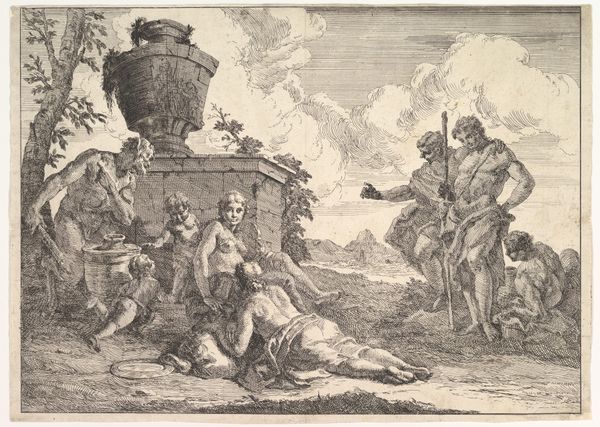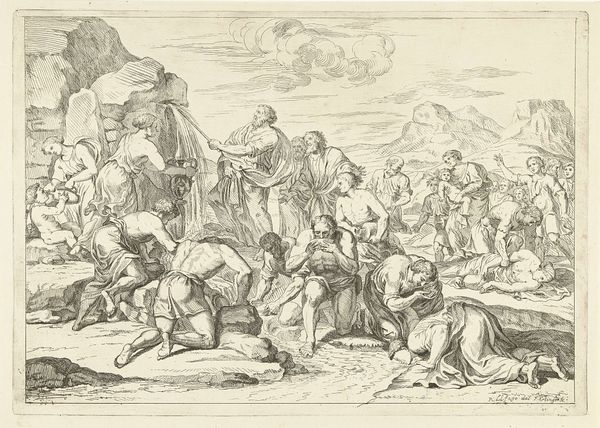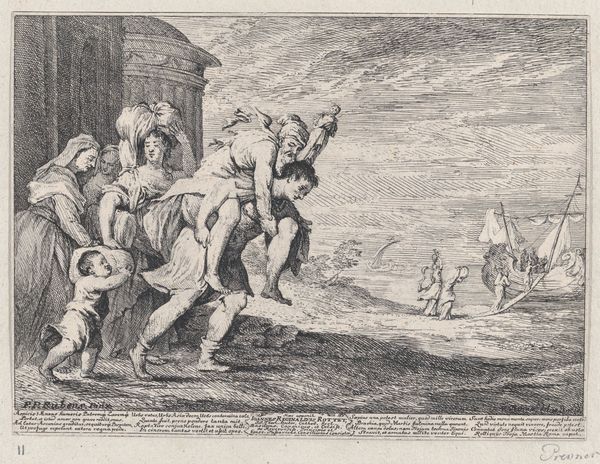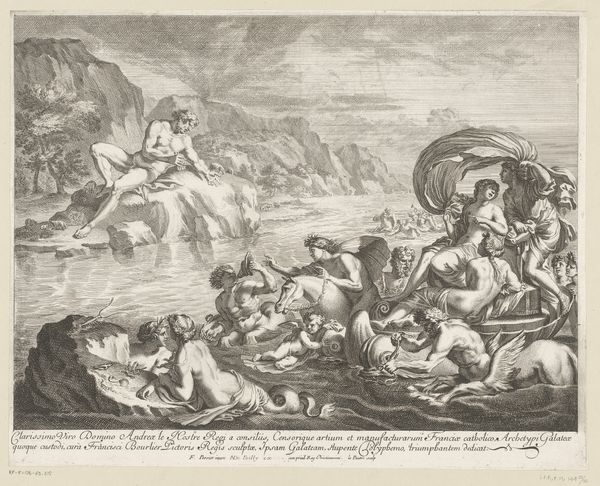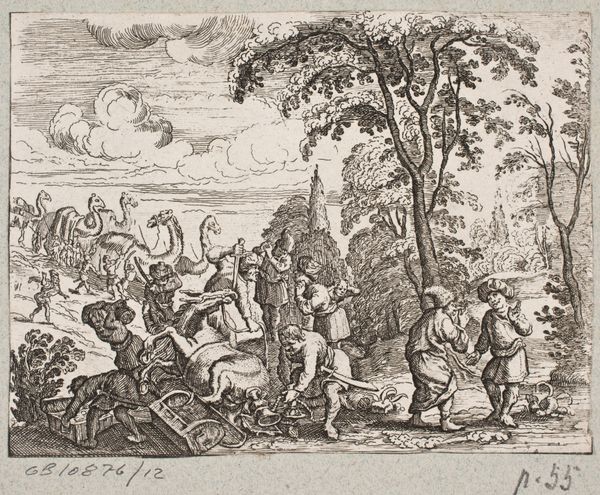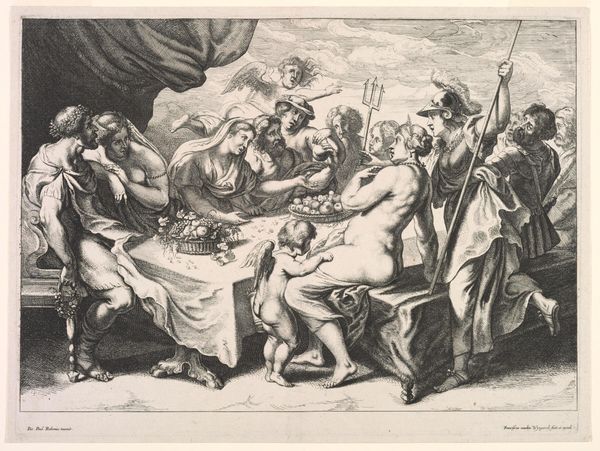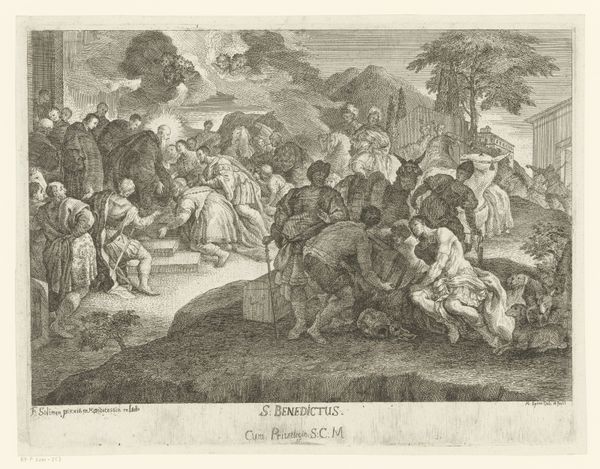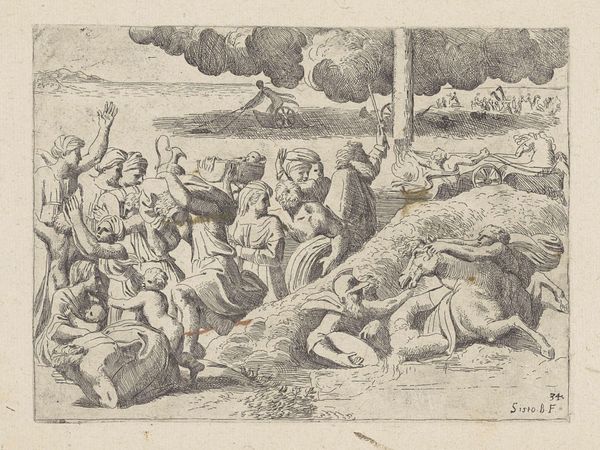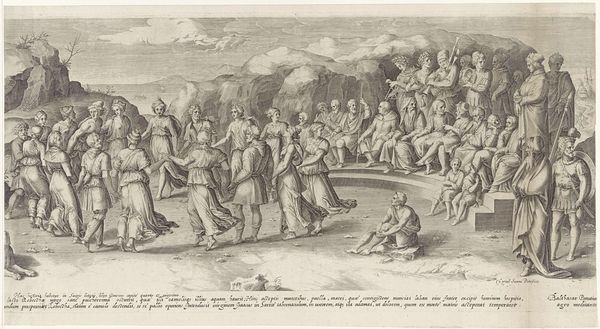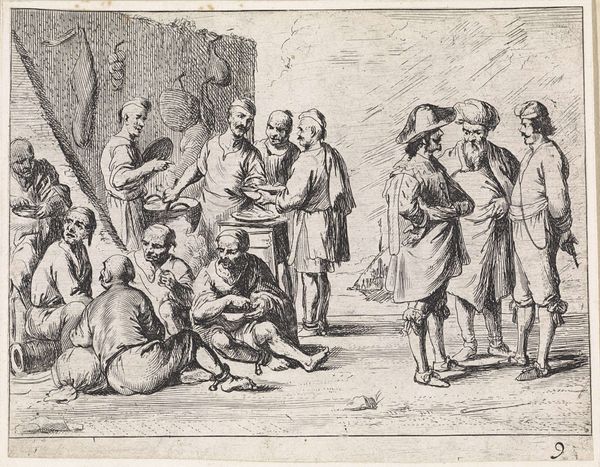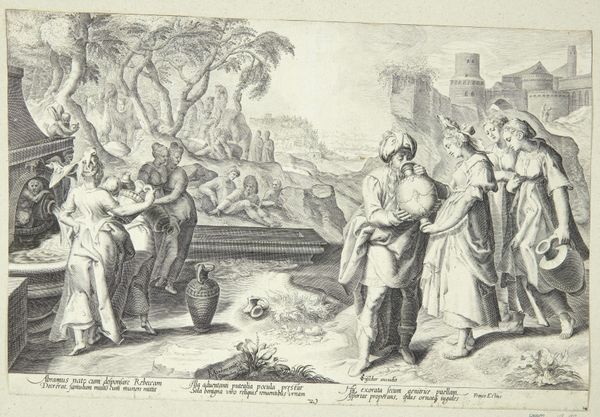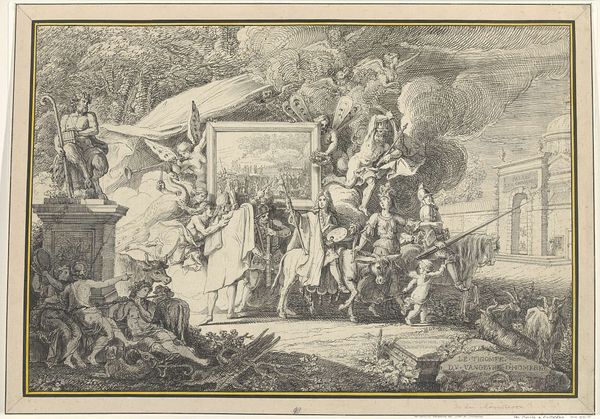
print, etching, engraving
#
allegory
#
baroque
# print
#
etching
#
figuration
#
line
#
history-painting
#
engraving
Dimensions: height 306 mm, width 436 mm
Copyright: Rijks Museum: Open Domain
Editor: This is Franz Ertinger’s "Dance Around the Golden Calf," created sometime between 1652 and 1707. It's a print using engraving and etching. It's a busy composition, lots of figures in a shallow space, almost theatrical. What catches your eye in this image? Curator: The immediate focal point is, of course, the Golden Calf itself. But, notice its diminutive size compared to the celebrating figures. Consider how this contrast illuminates the human capacity to imbue objects with misplaced importance. The calf becomes a symbol, not of divinity, but of humanity's flawed priorities. Doesn't it remind you of our current obsessions? Editor: That's an interesting connection. I hadn't thought about it that way. What about the figures? There are so many. Curator: Observe their expressions. There's ecstasy, abandon, even a hint of fear in some eyes. This work speaks to the intoxicating and dangerous power of collective delusion. See how the mountain behind acts like a silent witness to this idolatry, mirroring a collective elevation to temptation; it echoes our human desire to create totems of self-worship. Editor: So you see it as less about religious history and more about human psychology? Curator: Precisely! Art serves as a mirror, reflecting the shadows and aspirations of the soul. Do you see how the allegorical merges with enduring aspects of societal tendencies and the human psyche? Editor: Yes, I see it now. Thank you for the enlightening insight! I hadn't realized how many layers were packed in. Curator: And that’s the beauty of art, isn’t it? Always revealing new facets upon closer inspection.
Comments
No comments
Be the first to comment and join the conversation on the ultimate creative platform.
